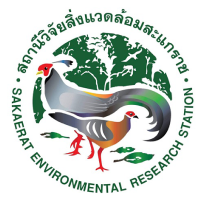Keywords :
Diet Age; Food Web; Radiocarbon; Stable Carbon; Nitrogen Isotope Ratios; Termites
บทคัดย่อ :
1. We propose that diets of consumers in a food web have various ages, where age is defined as the time elapsed since carbon (C) in the diet was fixed from atmospheric CO 2 by primary producers. To examine the diet ages for primary consumers in a detrital food web, we measured the radiocarbon ( 14 C) content of termites collected in Thailand in 1998 and 2004. Diet ages were estimated by comparing the 14 C content of samples with records of atmospheric 14 CO2, which doubled in the early 1960s as a result of nuclear weapons tests and decreased after the nuclear test ban treaty. For comparison,
we measured the 14 C content of bees as primary consumers in a grazing web at the same study site. Stable carbon and nitrogen (N) isotope ratios were also analysed.
2. The 14 C contents of the same species of termites decreased during the sampling interval, indicating that they used organic matter produced after the peak in atmospheric
14 CO 2 . The diet ages were estimated to be 12-18, 7-13 and 5-9 years for the wood-feeder ( Microcerotermes crassus), the soil-feeders (Dicuspiditermes makhamensis
and Termes comis) and the fungus-grower (Macrotermes carbonarius), respectively. One colony of soil-feeder (
T. comis), which nested in a fallen tree trunk, had exceptionally low 14C content, and its diet age was estimated to be around 50 years. The two bee
species had lower 14 C contents compared with the termites, and their diet ages were estimated to be 0 (Apis florea) and 2-4 years (Trigona sp.).
3. Stable C and N isotope ratios of termites showed similar patterns as previously reported, and no clear difference was observed between 1998 and 2004. Although the bees and the fungus-growing termite had similar stable C and N isotope ratios, their
diet ages differed.
4. Our study suggests that radiocarbon can be used to estimate the diet ages of consumers in terrestrial food webs. Diet age should provide new insight into the trophic
positions of organisms in grazing and detrital food webs and the interactions between
these two webs.
เอกสารอ้างอิง :
Hyodo, F., Tayasu, I., & Wada, E. (2006). Estimation of the longevity of C in terrestrial detrital food webs using radiocarbon (14C): how old are diets in termites?. Functional Ecology, 20(2), 385-393.



